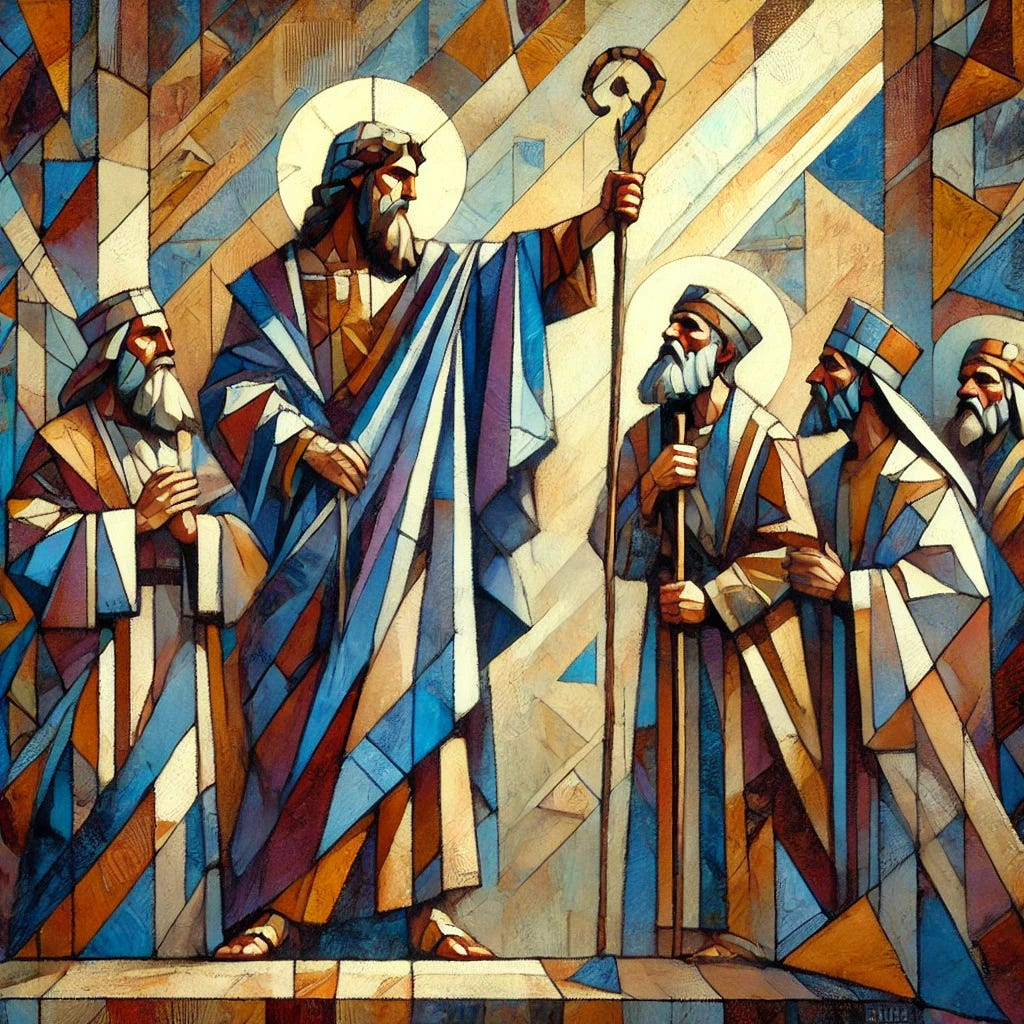Ziklag 12.21 - The Tel Dan Stele
The House of David, History, and the Unstoppable Sovereignty of God
Let’s talk about the Tel Dan Stele—a piece of history so explosive it shakes the ground under centuries of doubt. Found in 1993 at Tel Dan, near the foot of Mount Hermon in northern Israel, this broken basalt monument does something remarkable: it reaches out of the ancient past to affirm the truth of the biblical narrative.
A Discovery That Shouts
The stele is no small artifact. Written in Aramaic and dating to the 9th century BC, it was likely commissioned by Hazael, king of Aram (modern Syria). Its message? A bold declaration of military victories over Israel and Judah. Hazael boasts about striking down two kings:
• Joram, son of Ahab, king of Israel.
• Ahaziah, son of Jehoram, king of Judah.
But here’s the kicker. In his list of conquests, Hazael drops the name “House of David”—the earliest extra-biblical reference to David’s dynasty ever uncovered. This find isn’t just archaeology; it’s a megaphone confirming the historicity of King David and the covenantal promise surrounding his lineage.
The Ground Zero: Tel Dan
Tel Dan isn’t just any site—it’s a place heavy with spiritual and political drama. Known as the northernmost frontier of ancient Israel, it was a city both strategic and spiritually compromised:
• Religious Hub: It was here that Jeroboam set up one of his infamous golden calves, plunging Israel into idolatry (1 Kings 12:28–30).
• Military Hotspot: Positioned at the crossroads of Israel, Aram, and other powers, Tel Dan saw constant conflict. The discovery of the stele at this location highlights the turbulence of Israel’s history, where spiritual rebellion and political upheaval collided.
This stele wasn’t found by accident—it’s a loud reminder of how Israel’s disobedience invited judgment, and yet, even in chaos, God’s promises held firm.
Theological Thunder from Ancient Stones
The Tel Dan Stele isn’t just an ancient brag sheet; it’s a theological bombshell. Let’s unpack the layers of meaning:
1. God’s Sovereignty Over History
Hazael, like so many proud rulers, thought he was in control. But Scripture tells a different story. The Bible records Hazael as an instrument of God’s judgment, raised up to discipline Israel and Judah for their covenant unfaithfulness (2 Kings 8:12; 10:32–33). Yet, even as Hazael’s victories seemed devastating, they couldn’t derail God’s ultimate plan.
• Hope: History bends to God’s will. The stele shows that even when judgment comes, it serves a higher purpose in God’s redemptive story.
2. The Enduring Legacy of David’s Covenant
The stele’s reference to the “House of David” is far more than historical trivia—it’s proof that God’s promises endure. David’s throne wasn’t just political; it was prophetic. God promised David a kingdom that would last forever (2 Samuel 7:13), and despite Hazael’s temporary victories, the Davidic line survived. Ultimately, it culminated in Jesus Christ, the eternal King.
• Hope: The Tel Dan Stele stands as a witness to the unshakeable truth of God’s covenant. What He promises, He delivers.
3. God’s Faithfulness in Redemption
The stele captures a moment of failure for Israel and Judah—defeated, fractured, and judged. But judgment wasn’t the end of the story. God’s faithfulness persisted, as evidenced by His deliverance of Israel from Hazael’s oppression (2 Kings 13:23).
• Hope: God disciplines, but He never abandons. The same faithfulness He showed to His people then is the faithfulness we find in Christ today.
Why the Tel Dan Stele Matters
The Tel Dan Stele is more than a historical artifact—it’s a bridge connecting the Bible’s narrative to tangible reality. It silences skeptics who doubt the existence of David and his dynasty and reminds us that Scripture is not myth but history rooted in real events.
For Christians, the stele’s testimony carries profound significance. It reminds us that:
• God’s promises are unbreakable.
• His sovereignty is unmatched.
• His kingdom, established through the House of David, is eternal.
As Isaiah proclaims, “Of the increase of His government and peace there will be no end, upon the throne of David and over His kingdom” (Isaiah 9:7). The Tel Dan Stele is a loud, ancient voice declaring that no matter how chaotic history appears, God’s purposes remain unshaken.
A Call to Trust
The Tel Dan Stele invites us to see God’s hand in history—not just as an abstract idea, but as a reality proven in the rise and fall of kings, the survival of a covenant, and the coming of Christ. In a world that often feels chaotic and uncertain, this ancient stone whispers a profound truth: God’s promises never fail.
Take heart. The House of David points us to the eternal King who reigns in justice and peace. Let the stones cry out, and let us listen. God is faithful, and His Word endures forever.




